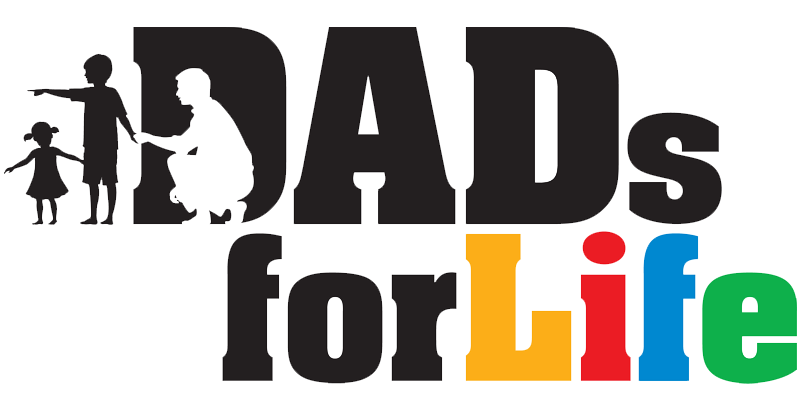Source : Stockall, N. & Dennis, L. (2012). Fathers’ role in play: Enhancing early language and literacy of children with developmental delays. Early Childhood Education Journal. Published online Oct 2012.
Introduction
Research suggests that the type of play that males engage in with children is typically more active, with distinct benefits for children. For example, fathers’ preference for stimulating and physical play, including rough and tumble play, has been found to encourage risk-taking behaviour in children within a safe and secure bond with the father, and to promote children’s obedience and competition skills, attachment security, and emotional regulation.
Play can, however, be more challenging for fathers of children with special needs. The following sections summarise insights from an academic paper, which reviews research on children’s literacy development and uses the case study of a father and child to offer suggestions for father-child play as a means of enhancing literacy in children with developmental delays.
Enhancing Children’s Literacy through Play
Emergent literacy describes the developmental process by which children acquire the foundation for reading and writing. Core literacy skills include language, listening comprehension, and alphabetic knowledge, among others.
There is sometimes a mistaken perception that literacy activities involve only passive or sedentary types of interactions. However, there are various ways in which active literacy learning can be built into reading, free play, and pretend play. In fact, fathers’ tendency to engage with children in play offers unique possibilities for father-child activities that promote literacy development.
Suggestions for Fathers
Selecting literacy and reading activities that lend themselves to play scenarios
The authors suggest that fathers ”read” with children daily in various ways – including sharing a picture book, working together on an alphabet puzzle, making a grocery list, playing simple hide and seek games, or singing songs.
Such activities often involve predictable turn-taking between father and child, or rituals that incorporate rhymes and repetitive verses, which are more likely to engage children with developmental delays. Activities that fit into the natural routine of the family and that interest both the father and child are also suitable choices.
When reading, fathers could choose books that lend themselves to more active play scenarios that father and child can act out. For example, fathers could even incorporate “props” around the house like cardboard boxes to simulate the experience of being in a train if the story focuses on a train.
Building on free play experiences
Play interactions are especially engaging to children with developmental delays when grounded in a turn-taking ritual, where each participant initiates play and responds to the other, and particularly when children have opportunities to take the lead.
For example, the father may notice the child taking an interest in a dinosaur poster or toy, and could respond by raising the child up to eye level with the object to extend her interest. If the child says “dinosaur”, the father could repeat and expand the child’s message by saying “yes that’s a red dinosaur”. Known as “linguistic mapping”, this action helps to develop the child’s communication and vocabulary.
The father could also link play to more explicit literacy activities by picking up a related book on dinosaurs, or pointing out letters, words or names in the book that relate to the child’s original object of interest. This action is known as “print referencing”, and helps children understand that letters make words, and that words convey meaning.
Scribbling or doodling also offers rich opportunities for active play that can involve literacy. The father could show appreciation for a child’s seemingly random creations and ask him to share more about them, in this way encouraging him to experiment with his writing skills. The father could further model writing skills by writing something for the child, and telling him what he wrote.
Using “props” in familiar places for pretend play
Research on children’s pretend play – e.g., when they pretend that blocks are mountains or stuffed animals are dinosaurs – has shown that the symbolism involved in this type of play helps children construct knowledge about their world.
Familiar contexts such as eating in a restaurant, shopping, or riding in the car can be rich stages for such play. Fathers can capitalise on these contexts by following the child’s lead, then introducing new characters or plot changes to extend the play, and making use of available props (e.g., cutlery or the menu in a restaurant) to enhance the play.
Enlisting professional assistance with research-based play interventions
Researchers have also identified various play-based interventions that support adaptation in children with specific types of developmental delays. Fathers and professionals who work with families could consider how to incorporate such activities into father-child interactions.
Some examples are summarised below:
- When the child has language delays or is non-verbal: The parent observes the child and imitates the child’s behaviours. When the child notices that the parent is imitating him/her, the parent initiates movement (i.e. clapping hands) and waits for the toddler to imitate. The parent then praises the toddler when imitation takes place.
- When the child has expressive language delays: Using a hand puppet (i.e. Brown Bear), the parent explains that he is going to tell the child a story. Then the child will tell the puppet the story. The parent then makes up a short story such as, ”Tommy found a ball. He threw it up in the sky. It didn’t come down! Oh no, it was stuck in the tree. Now you tell Brown Bear the story.” As the child speaks, the parent responds with the puppet saying, ”Umm,” and ”Oh,” and nodding the puppet’s head.
- When the child has developmental language delays: Using shaving cream or play dough, the parent draws a consonant letter, then names the letter and its sound. For example the parent might draw the letter T and say, “This letter is called T, it makes the sound ‘t’. Now you try it.” The parent then asks the child, “What is the name of the letter? What sound does it make?”
Conclusion
Fathers offer their children unique and stimulating types of play that can encourage and extend early literacy skills. The suggestions outlined here help fathers incorporate literacy skills more deliberately into their interactions with children, so that father-child play is as dynamic and educational as possible.
About the Author: The Dads for Life Resource Team comprises local content writers and experts, including psychologists,counsellors, educators and social service professionals, dedicated to developing useful resources for dads.
First published on 11-03-2013.
